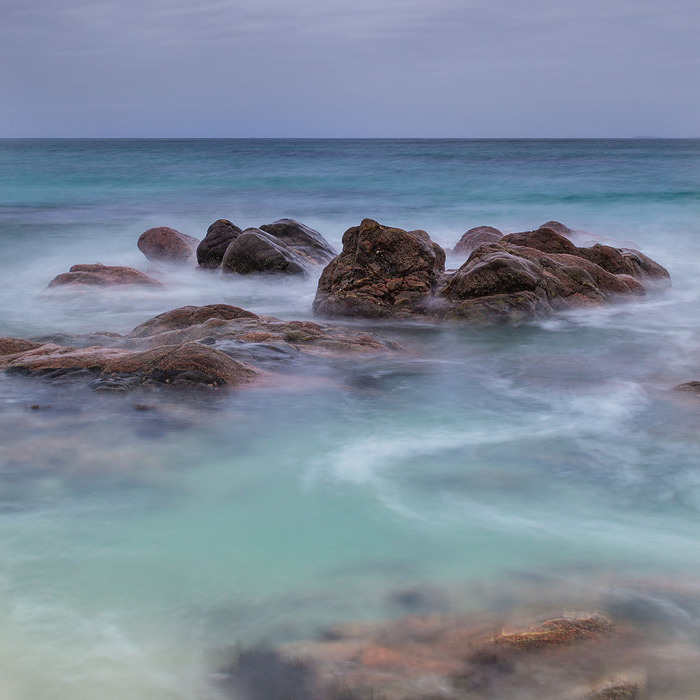When you visit a place and the light is, as some say, 'boring' or not 'interesting', it is good practice to switch to Creative Mode. I mean, start creating an image instead of capturing one. You need to think constructively and try to find elements in an image that you can enhance. Here for example, I wanted to do something with this rock outcrop as I knew that the playing of the waves around the rocks in combination with a slow shutter speed and the right ND Graduated filter to darken the sky, would be the ideal recipe to create an image of a place where others would probably have walked away - five seconds exposure did the trick.
Here is a tip. Write down a list of things and take that list with you in the backpack. In that list have a mention about slowing down waves, creating effects with moving clouds on a cloudy day, use a lot of sky or keep it to an absolute minimum and so on. It all depends on what kind of light you will come up against. Every time you find a new trick, add it to the list. Use the items on the list to your advantage, depending on the situation.
Some might say that a good photographer never shoots landscapes during the day and under harsh light conditions. I say use this harsh light to your advantage. If you come up against a glorious looking place like in this picture from the north west beach on the Isle of Iona in Scotland, what will you do? Walk away because you found yourself there during the day? Certainly not. Make sure the sun is behind you or slightly behind and above your head. Usually, the other side of sky is polarised and the blues look superb. keep it simple. Big sea and a large blue sky and there you have it, a simple and sweet picture.
Make things even more simple:
- Concentrate on what is in front of you and almost under your feet. You will be surprised of the things you will see, once you start looking.
- Look for the side of sky that is by nature polarised ie. the opposite side from where the sun is. No circular polariser required.
- Go for extreme exposure of 5-6 minutes, using a 15 stop ND filter.
- Look for still water and use only reflections.
- Play with different shutter speeds to create a variety of effects.
- Use large objects to fill in the frame.
- Expose for the light on subjects by spot metering.
- The list can go on and on, its all in your head and how creative you can be.

